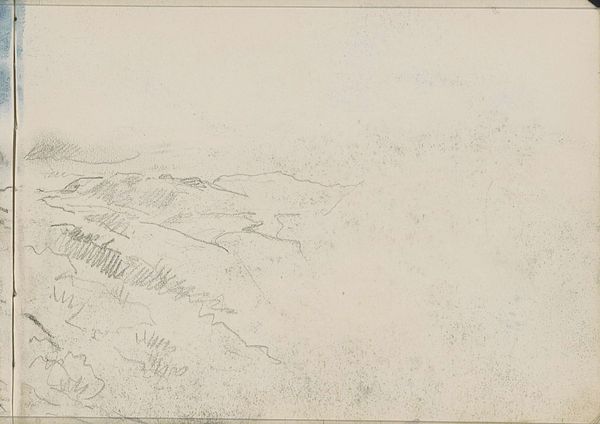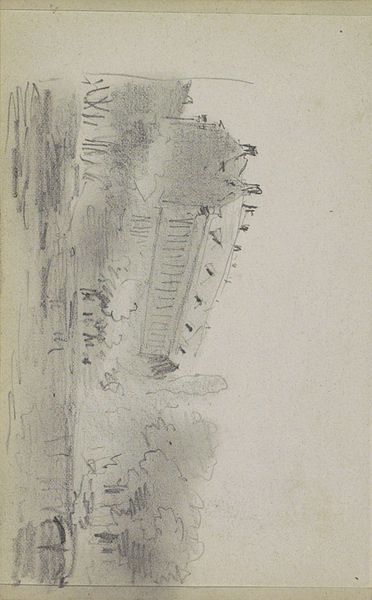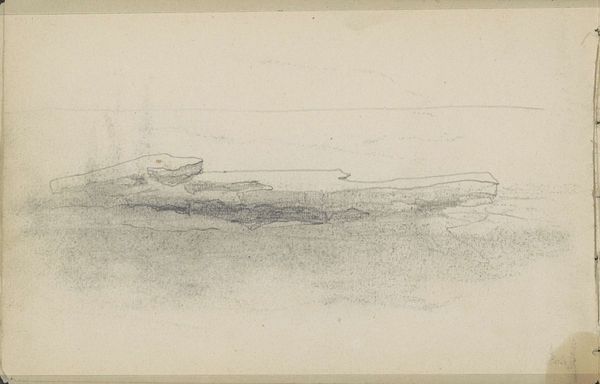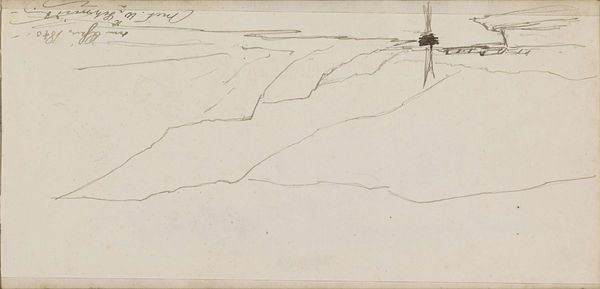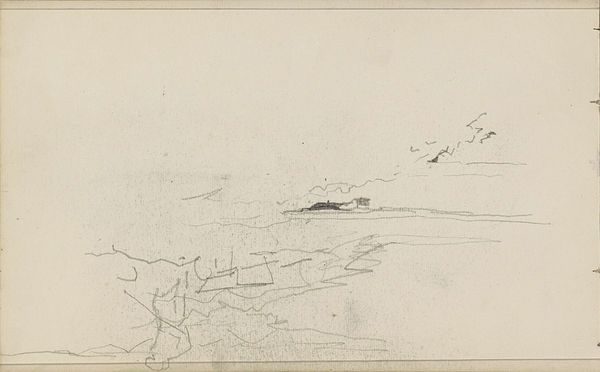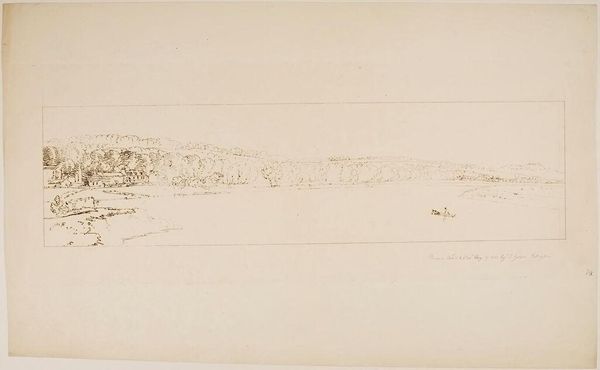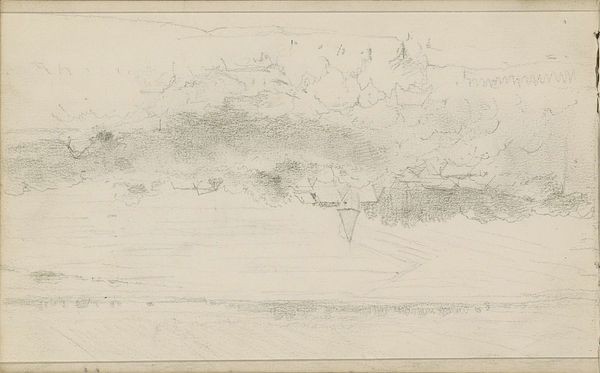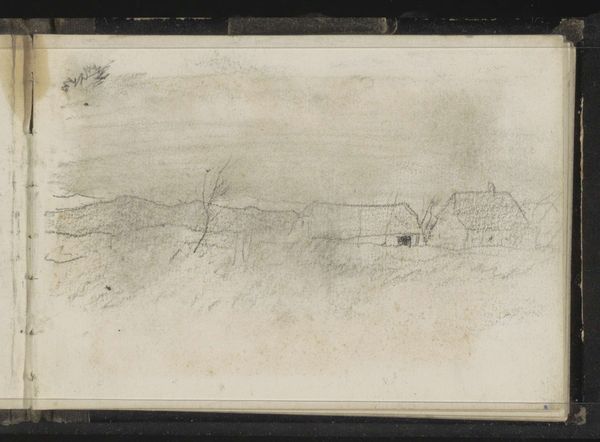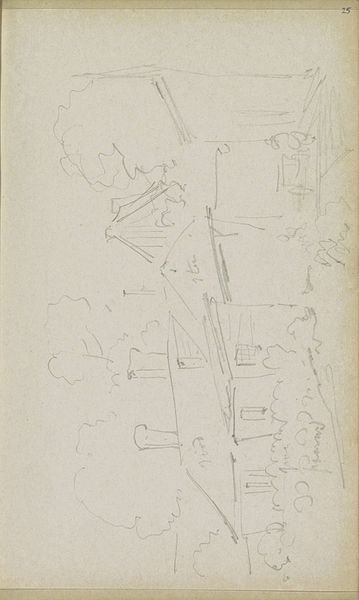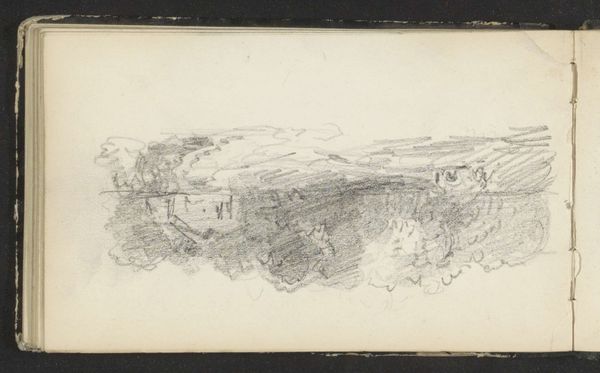
drawing, pencil
#
drawing
#
pencil sketch
#
landscape
#
romanticism
#
pencil
#
cityscape
Copyright: Rijks Museum: Open Domain
Johannes Tavenraat made this pen and ink drawing of a mountain landscape with a monastery or church by a lake in the Netherlands in 1840. Its spare lines and emphasis on the receding planes of the landscape place it within a tradition of Dutch landscape art that goes back centuries. We might consider this drawing to be a kind of romantic statement, typical of its time, given its evocation of the sublime and the picturesque. The Dutch reformed church was the dominant religion in the Netherlands at this time. The architecture of monasteries and churches was loaded with social meaning and can be seen as commentary on the institutions of art. The historian can help us understand this drawing, thinking about how the architecture of religious institutions creates meaning and how the artist sees their role in relation to them. By looking at studies of similar images, we can better understand the role of the artist in Dutch society in the 1840s.
Comments
No comments
Be the first to comment and join the conversation on the ultimate creative platform.
